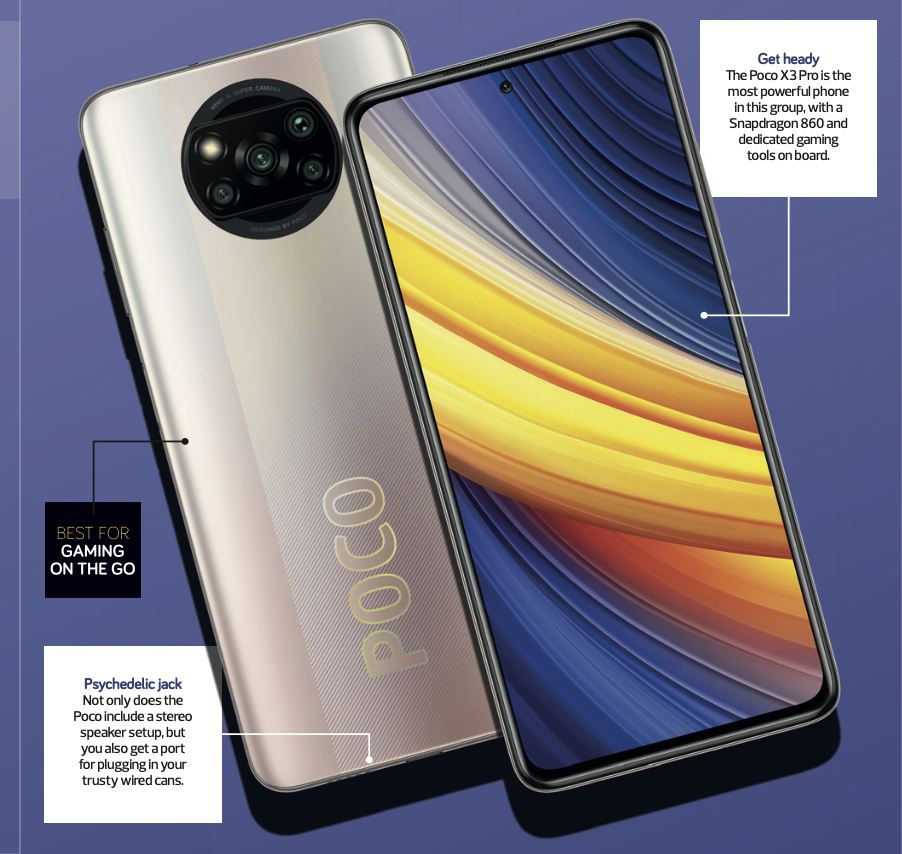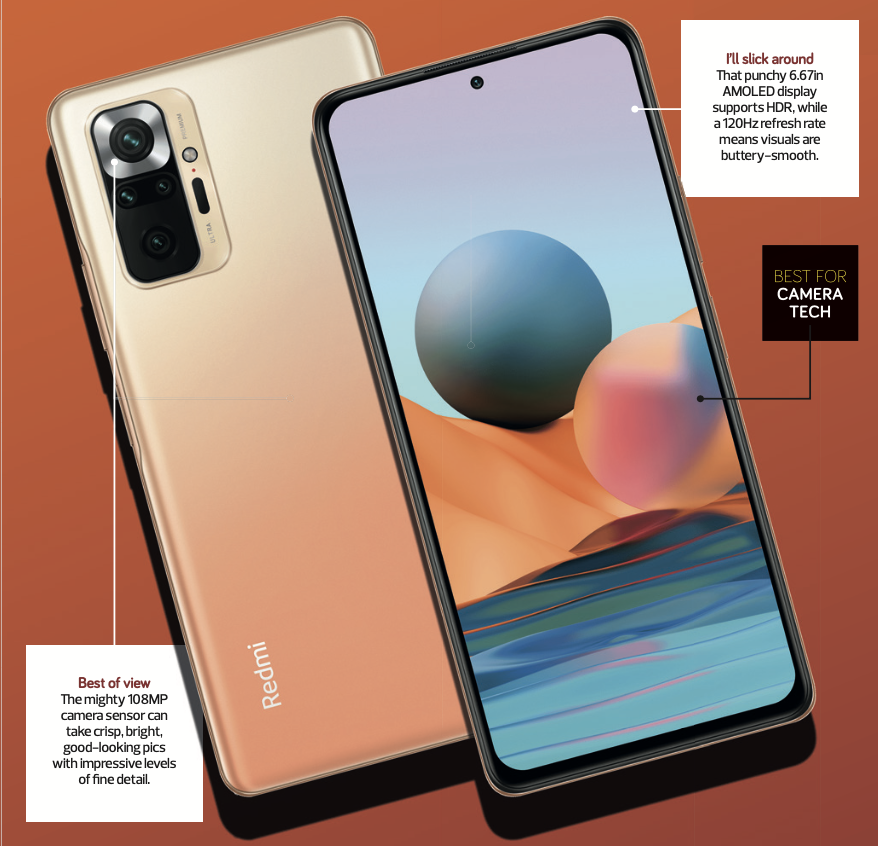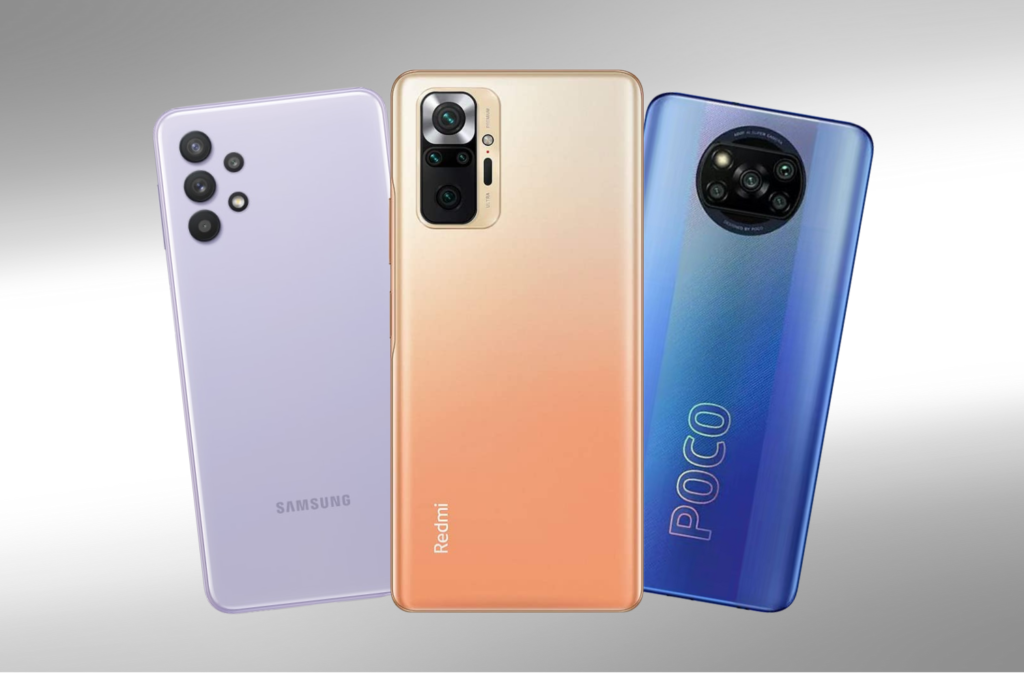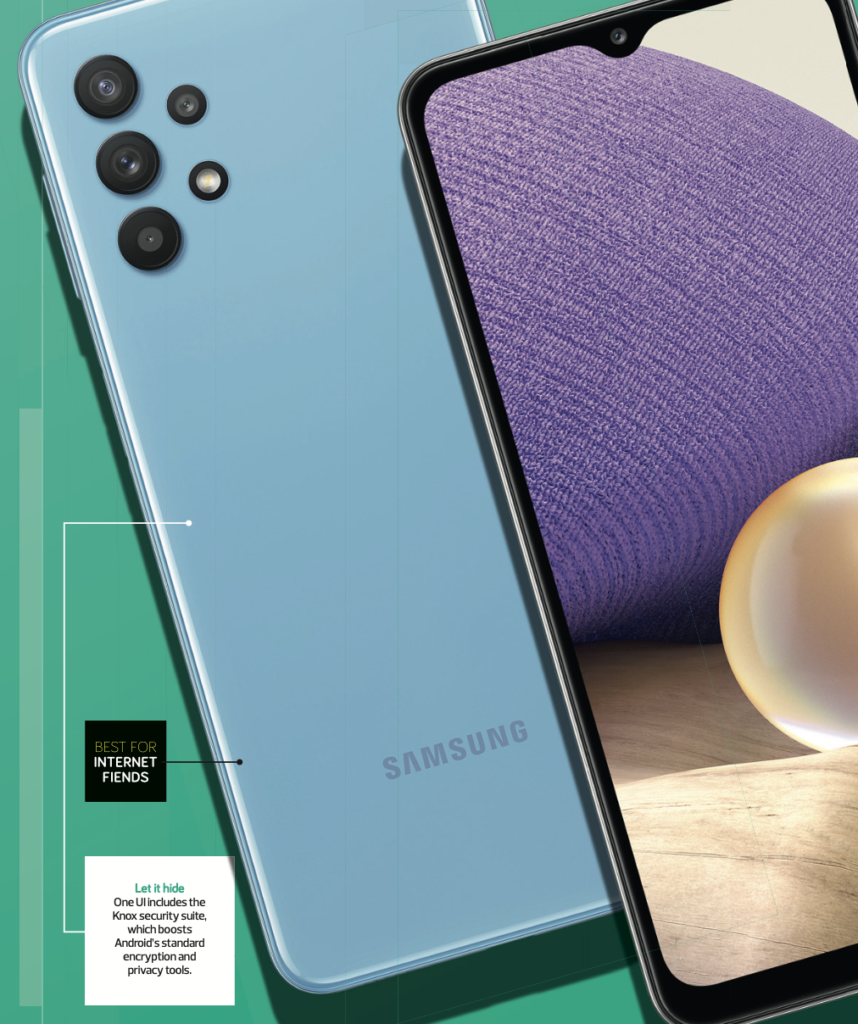Amazing what you can get for R6 000 or less these days… but which of these three budget phones is the best bargain for you?
Samsung Galaxy A32 5G
So you want to grab a Samsung for not very much money? You’ve got loads of options from the company but this is a very competitive market segment. There are loads of options everywhere.
The A32 comes in two different flavours, the standard A32 and then this 5G version that trades an AMOLED screen and 64MP main camera sensor for a speedier internet connection, a TFT display, and a 48MP main sensor. There’s a 6.5in screen to play with, but there’s no real difference in terms of design. Both have a notch and a plastic back. This one’s all about the internals, with the Dimensity 720 5G processor standing in for the stock A32’s Helio G80.
Honestly, there’s a whole lot of compromise in the Galaxy A32 5G. The stock version of the phone is better almost across the board – it’s got an AMOLED screen at a proper FHD resolution, versus a 720 x 1 600 TFT panel, and a much larger main camera sensor. You really have to care about the internet speed to swap this number of internal features for 5G, which makes this perhaps the least attractive device on this list.
There’s still plenty to love – Samsung’s design is solid, if a touch generic, and the 5,000mAh battery operates for longer than you’d expect. That can be laid at the door of the reduced spec loadout.
The 48MP main camera takes decent snaps, especially if you’re taking them in good light, but that’s not remarkable for budget smartphones. Samsung’s software mean that it’s also got some low-light skills. Don’t expect miracles, but it’ll do okay in darker settings.
On a pure hardware level, the standard Galaxy A32 is the better phone. And it’s also R500 cheaper. If you’re okay with 4G, opt for the less costly device.
Poco X3 Pro
R5,400 | connecteddevices.co.za

For less cash than you’d reasonably expect, you could own the excellent Poco X3 Pro. This sleek phone is essentially a reinvigorated Poco X3 NFC – one of the best budget phones of last year – with a performance boost courtesy of the mighty Snapdragon 860 chipset.
Visuals are served up by a 6.67in FHD+ display and, despite that low price, the Poco also delivers a stereo speaker setup, plus a headphone port and solid Bluetooth. You’ve got NFC for contactless payments, microSD support to expand the storage and a responsive edge-mounted fingerprint sensor. Basically it’s got everything you could possibly ask for except a slot that spits out money.
As expected, the Snapdragon 860 chipset can handle absolutely everything you need it to, even memory-guzzling games like Genshin Impact (provided you keep the detail on medium settings).
The X3 Pro sports an IPS screen rather than OLED so contrast isn’t super-strong, but your peepers will still be pleased by the punchy colours and fine details. Plus the adaptive refresh rate maxes out at 120Hz to keep things looking smoother than buttered Barry White.
The 48MP main sensor captures sharp pictures of even the squirmiest subjects, as well as respectable 4K footage. In fact, beyond the slightly garish design, there’s really not much to dislike about the Poco
X3 Pro. Besides, while the rather ridiculous branding may be a bit of an eyesore, at least the phone is solidly built with Gorilla Glass 6 and IP53 splash-resistance.
Note, however, that Poco phones still use Xiaomi’s MIUI launcher – so while you get wonderful bonus bits like the gaming mode and Control Center, you’ll also be lumbered with a bunch of junk and questionable future updates.
Redmi Note 10 Pro
R5,500 | takealot.com

From the Xiaomi stable, the Redmi Note 10 Pro is one of the most impressive budget phones right now, from its smart yet hardy design – with splash-resistance and scratch-beating Gorilla Glass 5 up front – to the specs inside.
Performance comes courtesy of the Snapdragon 732G, which can capably handle everyday life as well as light gaming. Meanwhile Netflix fans will appreciate the spacious 6.67in AMOLED screen with HDR support, plus the stereo speakers and headphone port.
There’s good news if you want to shoot your family too, in the legally acceptable sense, as Xiaomi has crammed a 108MP camera onto the back.
For this bargain price, the display is a proper eye-pleaser. Thanks to its HDR streaming support you’ll be served with crisp contrast and lifelike visuals, while the 120Hz refresh rate means supported apps and games such as Vainglory are satisfyingly smooth.
As a bonus, this Snapdragon platform is also energy-efficient, so the Note 10 Pro’s battery should keep you going all day long, even with plenty of screen-on time. The only thing missing is 5G support.
That 108MP camera can capture great snaps of kids, pets and other hyperactive subjects, as well as richly detailed 4K home movies with crisp, clear audio.
You also have an ultrawide lens to fit more action into each frame, plus the usual macro features.
But here we go again with Xiaomi’s MIUI launcher. You still get all the stock Android features, plus a feast of nifty bonus bits including the Apple-style Control Center and a proper one-handed mode. On the flipside, however, the Redmi is stuffed with bloatware and probably won’t enjoy Android updates well into the future.





